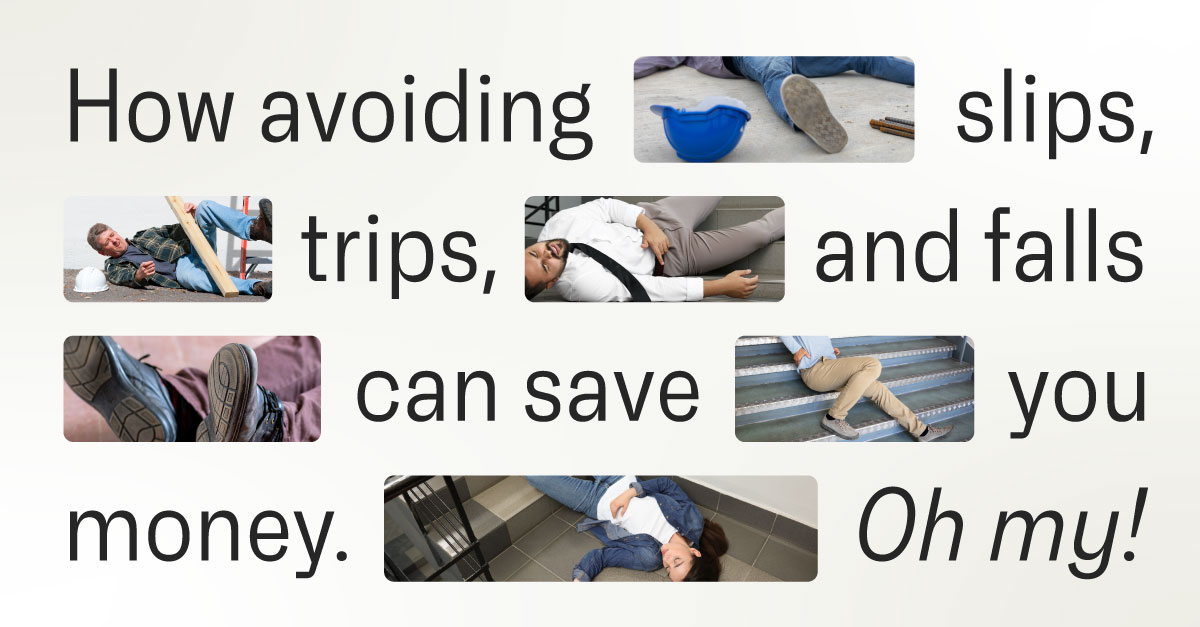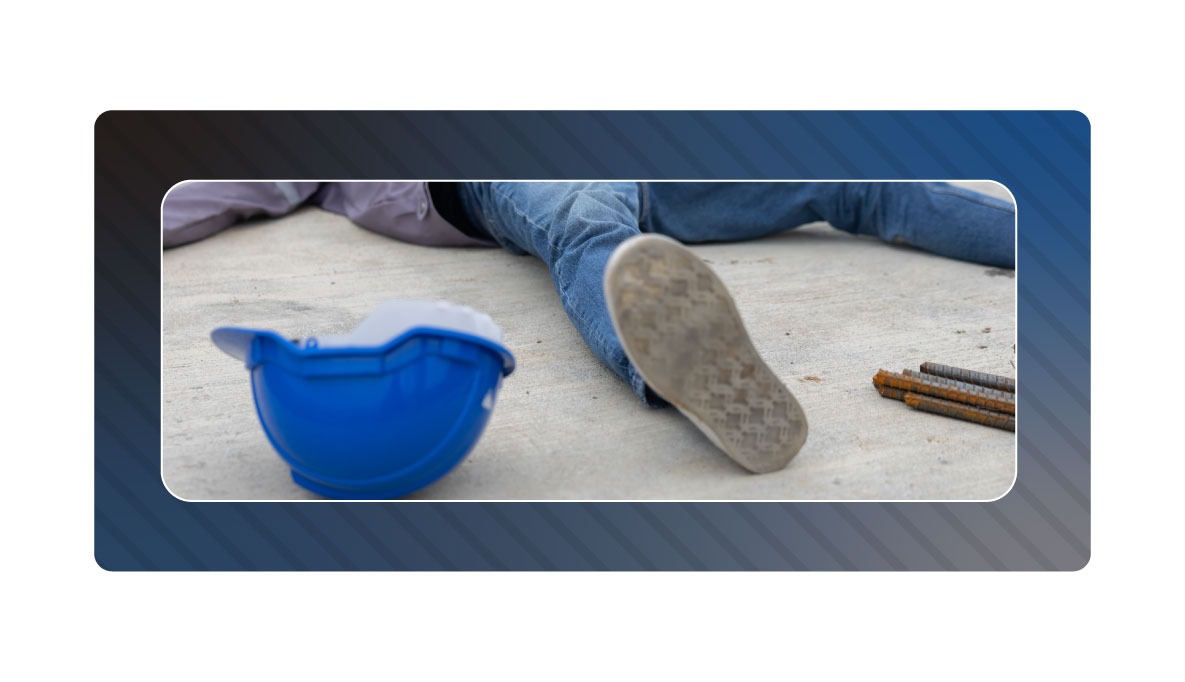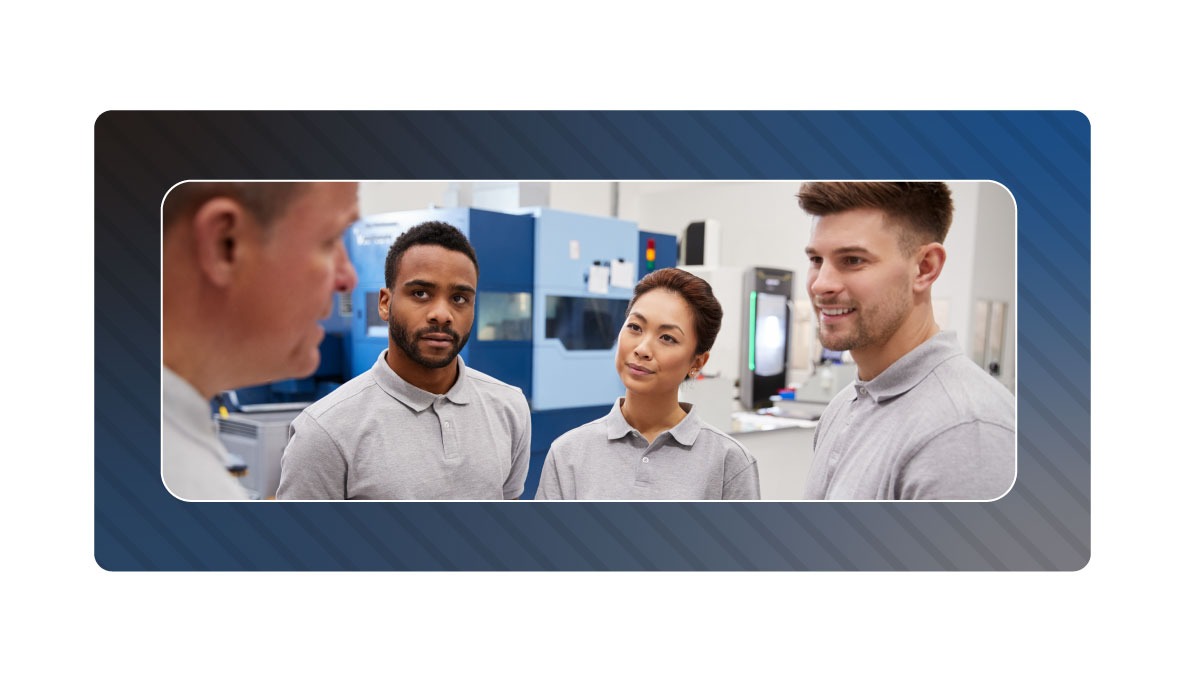Your premier HR partner
Let us take on your HR functions so you can strive for greatness.
Contact us.


The saying, “An ounce of prevention is worth a pound of cure,” is no old wives’ tale. Slips, trips, and falls are among the most common workplace injuries each year. These incidents—often resulting in sprains, fractures, and lost workdays—are easily preventable through awareness and preparation.
Most slips, trips, and falls occur at entrances and exits, especially as the weather starts to change. Transitioning to fall and colder months causes an increase in exposure to environmental factors:
The key to prevention lies in recognizing the risks before they lead to injury. This post walks through several strategies to consider to keep your employees and customers safe—and protect your bottom line—especially when winter weather arrives.

Anticipate the weather where your employees work.
Ensure walkways, steps, and parking areas are routinely cleared and de-iced before employees arrive. This strategy means salting concrete walking areas before bad weather moves in and having a third party or your maintenance workers arrive earlier than usual to shovel pathways. Adding non-slip mats at building entrances can also help mitigate tracked-in moisture.
Keeping supplies such as de-icing salt, sand (which improves traction), absorbent materials, shovels, and mats readily available makes taking action easier when wet or snowy weather occurs. Regular upkeep to prevent re-freezing is also important.

Highlight slip and fall risks.
Use bright, attention-grabbing signage—neon-colored signs or "Wet Floor" cones—in high-traffic areas where melted snow creates slipping hazards. These visual alerts remind employees to slow down and take extra care.
Increase lighting in outdoor areas.
Adding more lighting to outdoor areas increases visibility for employees and customers coming into your location, making it easier for them to identify potential risks and take the necessary precautions.
Conduct regular walk-throughs to identify and correct potential hazards.
If you know the sidewalk at the corner of your building regularly ices over, check the gutters and remove debris that can cause water to overflow where the ice forms. Solving the root problem like this saves time and effort of addressing the hazards every time the weather turns bad.
This approach follows safety's hierarchy of controls, which prioritizes solutions from most to least effective:
In the icy sidewalk example, clearing the gutters eliminates the root cause—preventing ice formation rather than simply treating it after the fact. Maintaining a log of de-icing and cleaning activities is not only important for documentation purposes but also provides communication and accountability across shifts.

Prioritizing reminders about safety procedures, protocols, and equipment helps keep safety top of mind for your employees. Weekly team meetings are an ideal time to highlight specific situations. Falls usually happen when people are distracted or unaware and fail to pay attention to hazards. These prevention strategies aren't just good practice—they're essential to protecting your profitability.
Prompt reporting of any slip, trip, or fall, as well as near misses, is crucial for processing workers’ compensation claims, identifying trends, and enhancing workplace safety. Since work comp injuries affect insurance premiums, one or two injuries in a year can double premiums for several upcoming renewals. That’s a steep cost for preventable accidents!
Running a business is like a three-legged stool—it only stands when all three legs are balanced. We help our clients maintain that balance between product quality, profitability, and safety. Neglect any one of them, and your company risks tipping over. Safety precautions don't produce instant results, and rushing through them creates a false sense of security. Whether making another pass to clear icy walkways or adding visual warning signs, the payoff won't appear in your bottom line immediately. But prevention protects your profits by keeping them from being diverted to financial drains like injury costs, premium increases, and OSHA fines.

Think of injury prevention as an investment, not an expense. The results aren't immediate, but each preventative measure saves you from future regret and rising costs. We've seen too many clients staring at increased workers' compensation premiums, wishing they could turn back the clock and take action when it mattered most.
Beyond increased insurance premiums, OSHA fines for unsafe work environments are very real—and very expensive. These fines can range from $1,000 to $125,000, depending on the severity, and can take profits directly out of your pocket.
Spending a little extra to prioritize safety can save your organization a significant amount in the event of an injured employee or customer. An ounce of prevention really is worth a pound of cure—especially when that pound costs you tens of thousands in premiums, fines, and lost productivity.
What strategies do you use to prevent slips, trips, or falls? We want to know! Email us at info@syndeohro.com to share your story.


Let us take on your HR functions so you can strive for greatness.
Contact us.